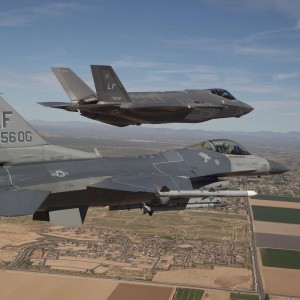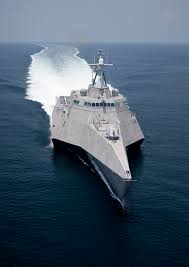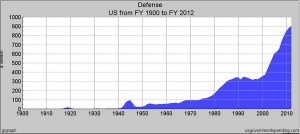A couple years ago, I was invited to do the closing keynote at the ISSA world conference in LA. It was a pretty memorable evening for me because I took the stage after a panel consisting of Richard Clarke, some FBI executive, and another speaker – and they were talking about cyberwar and the need for more government oversight to protect us against cyberterror (in particular) and terrorism (in general). So, I started my talk off by saying “I know it’s inappropriate for a keynote speaker to start off by rattling off a critique of the panel ahead of them, but there was a lot of lying going on…” Things went downhill from there.
There was a meet and greet after the conference, and I was embroiled in courteous but energetic discussion with a small knot of people off to the side of the open bar. One of the comments I had made in my talk was surrounding the FBI’s Virtual Case File program – a spectacular repeat failure that has sucked up a huge amount of taxpayer’s money. FBI keeps complaining about not having enough money, don’t’cha know, and their political solutions to social problems seem to revolve around: “give up your rights to make life easier for us because doing FBI stuff is hard and by the way we need more money.”
Actually, FBI needs to spend the money they get more wisely – instead of tossing huge front-loaded contracts to beltway bandits, maybe they should understand information technology. But that’s a story for another day. What happened next is the important point: one of the people I was talking to laughed and said, “If you think the FBI is bad, you should look at the Air Force!” And so I promised I’d do that.
I started reading up on Air Force procurement and weapons systems: what they are buying and what they have already bought. “Horrified” is an understated description of my feelings after a bit of that. I learned about the Osprey – a troop transporting aircraft that lands so hard in VTOL mode that they had to pad the passenger seats with more padding so the passengers don’t suffer spinal injuries. I read Pierre Sprey, and Chuck Spinney. I read about the F-22 and its stealth coating that isn’t waterproof.

Flying Toast
I read about the F-35… I can’t really get started on the F-35, here, but the F-35 program is such a waste of money it will shock anyone who comes to understand it. The F-22 is dead (there’s a reason that the Air Force still flies F-16s) finally, but the F-35, wow. The F-35 is a trillion-plus dollar program that’s producing an aircraft that’s flying lunchmeat: the F-16s it’s supposedly replacing can wax them easily, and against Russian or Chinese current-generation aircraft the don’t have a chance.*
A year after the talk in LA, I was doing at talk at a University up in New York, and in the Q&A period one of the students asked me, “You’re very negative on how taxpayer’s money is being spent on cyberwar. Is it really that bad?” So I told the story about the air force. And – seriously – compared to the F-35, it’s a rounding error. So I think I said, “It’s a rounding error but, you know, a billion here and a billion there and pretty soon we could have had single-payer health care, or free universities, or government subsidized housing.” And I told the story about the guy who said “… take a look at the Air Force” at the conference in LA. Ha, ha, ha.
I went and had lunch and while I was eating an older guy – a US Navy veteran it turned out – sat down with me and said, “You know that thing you said about the FBI and the Air Force? That was pretty funny. But if you think that the Air Force is bad, you should look at the Navy.” Ha, ha, ha.
So I looked at the Navy, starting with the nuclear submarine-building scandals of the 70s and 80s. I learned about how the Los Angeles class attack subs were so badly built that they were way over specified weight and the manufacturer wouldn’t have a chance to get them accepted, so they removed structural members so the sub could cruise at the rated speed – but the crush depth was dramatically reduced to the point where the sub was easily audible on the surface when it was going at rated speed – it couldn’t dive deep enough. I learned about the Aegis missile boats that had command systems so unreliable that they occasionally “bricked” for no apparent reason.

The USS Pork Chop
Then I started learning about the Littoral Combat Ship (LCS) which is possible the doggliest boondoggle ever: it was sold as a replacement for frigate-class ships in order to get congressional approval – the navy needed frigates – but, of course, it turned out to have “survivability” issues: it’s smaller than a destroyer and in order to get its speed up they made it out of aluminum. So, yeah, it doesn’t take punishment nearly as well as a ship made of steel that’s more than twice its size. Surprise!

Defense Spending 1900 to 2012
Smedley Butler** wrote his famous piece “War Is A Racket” about the profiteering in WWI and the situation hasn’t changed much except that US military expenditures are vastly higher now than they were then. Where is it going? Simple:
It’s a great big entitlement program for the defense industry.
A lot of how badly we taxpayers are getting screwed is classified, to protect the venal robbers that are sucking at the pentagon’s overflowing teat. Presumably because if everyone knew how bad it is, we’d do the “pitchforks and torches” dance with congress and the chiefs of staff as our partners.
Congress and President Obama (Presidents Clinton or Trump will certainly continue the program) are preparing to spend another $1 trillion to “refresh” the US’ already ridiculously disproportionate nuclear arsenal. The LCS program is way over budget, the F-35 is going to cost a bit over $1 trillion too – and it’s going to produce an aircraft that the Air Force will almost certainly only use for limited deployments, like it did with the F-22. The nuclear “refresh” will almost certainly result in the US cheating or exiting the limited test-ban treaty because new nukes gotta be tested, amirite? And in case any of you didn’t know, “refreshing” a nuclear warhead is not like changing the oil in your car – the way you do it is: build a new nuke, dismantle the old one (maybe) and call the new nuke the old nuke.
If you encounter someone who says they are “fiscally conservative” ask them how much they have studied pentagon and intelligence community procurement. If they haven’t studied this stuff, they are simply not serious about their conservatism.
As I see it, when President Obama made the choice to not have a civilized-style single-payer health care system, but didn’t shut down the nuclear “refresh” he made a choice for every taxpayer in the country – a choice we taxpayers probably would have made differently, if we understood it.
(* This might make an interesting article. I’m not sure how much interest there is in strategic air combat neepery)
(** One of the founders of the Marine Corps)

Nuclear refresh — you sure it’s not just a chewing gum or something?
Shiv@#1:
Nuclear refresh — you sure it’s not just a chewing gum or something?
I wonder how many cubic miles of chewing gum $1t can buy you.
A bunch of us (or maybe just me, not sure) would be interested in SAC neepery.
Hardly. If you ask a Marine, he/she will [overly] proudly tell you that the Marines were the first of the Armed Forces created, by the Continental Congress, in 1775. Also, they were disbanded after Yorktown, then reinstated in 1798. Look up Halls of Montezuma and Shores of Tripoli.
Naturalcynic@#4:
You are correct – I should have said “shaper of the modern marine corps.” Definitely not a founder, though.
I read a bio of Butler (what an interesting and horrible man!) a couple years ago. Butler and Lejeune were the pointed end of the spear as the US began overthrowing democracies all around the hemisphere. Maybe “lord high imperial thug” would have been a better description. Or “mailed fist of manifest destiny.”
Marcus Ranum @2
About 600,000,000 cubic feet (around 1/250 of a cubic mile), assuming retail prices. Or if you prefer, nearly two cubic feet per person in the United States.
Some here, and more if you include some of the F-35 political chicanery involving Canada, Norway, Sweden, etc.
Don’t mistake the early teething troubles of a ship class, or any weapons system, for its eventual worth. The Los Angeles class attack subs matured quickly into a reliable and capable system. We have 40 presently and they are doing their job very well. The only real problem is that they are getting old and are, despite regular refits and upgrades, based on a design from the late 60s.
Designs for war are always compromises. Costs and capability are always at odds. speed and energy efficiency conflicts with weight and durability. You can make it light and fast with a small offensive punch and little ability to take a punch. Or you can make it slow and heavy with a great ability to give and take punishment.
But before you conclude we should go slow and heavy you need to remember that speed allows you to more with fewer units. You need a bigger fleet. Also remember that in terms of punch and ability to take a punch it is hard to beat a battleship like the USS New Jersey (BB-62) and why we don’t see them around any more. Prior to WW2 big-gun battleships were the real deal. And then came along a new weapon, the dive bomber. They are the epitome of light and vulnerable and yet they swept the armored behemoths from the sea.
Of course relative vulnerability to aircraft wasn’t what doomed the USS New Jersey (BB-62). It was operating and maintenance costs, the huge number of crewmen necessary to fight her, and fuel consumption of over 400 gallons per hour at rest, and over 14000 gallons per hour at full speed.
From: https://www.ibiblio.org/hyperwar/USN/ref/Fuel/Fuel-BB.html
I agree that the F-35 program is a fiasco. At its roots the problem was simple: they tried to design a plane that could do it all and ended up with one that doesn’t do anything well enough to compete. The one requirement that blew the deal was a desire for a vertical takeoff and landing capability to be incorporated into a common airframe. It is something of a technological marvel that they did as well as they did. Still, technologically impressive doesn’t win wars. Irony is that the Chinese seem to have manufactured the same airplane while leaving out the vertical takeoff capability and ended up with what the F-35 should have looked like.
Read about it:
https://warisboring.com/fd-how-the-u-s-and-its-allies-got-stuck-with-the-worlds-worst-new-warplane-5c95d45f86a5#.bjwhsbj3k
On to the smear of Obama:
“As I see it, when President Obama made the choice to not have a civilized-style single-payer health care system, but didn’t shut down the nuclear “refresh” he made a choice for every taxpayer in the country – a choice we taxpayers probably would have made differently, if we understood it.”
That’s about like noting that the shortest distance between two points is a straight line without acknowledging that there is a huge obstacle in the middle. The ACA barely passed as it was, a single-payer system would have cut the insurance sector out of the game and, as a consequence, excluded votes necessary to pass. Far too many people make a living in the health insurance racket. The number of lobbyist working for insurance companies far exceeds the number of congressmen. No matter how much a majority of citizens may have wanted a single-payer system. no matter how much better it may have been for the health of the nation, it simply wasn’t going to happen. Not in a representative democracy where money equates to access and having a voice. Not where poor people do not reliably vote.
An update of nuclear weapons is far overdue. The newer designs are far more reliable and predictable. This translates into needing fewer of them. They also are far more stable. This translates into less maintenance and less need to move them around which means less opportunity for accidental loss or theft. They are also far more secure. Many of the older nuclear weapons from the 50s lacked any inherent security. If you could steal the, typically three, pieces of one you were entirely free to assemble and detonate it. Any decent mechanic could make it go boom. As time went on newer weapons had interlocks installed. These mainly buy you time and many of the older models never got the interlocks.
The replacements all have interlocks that, at the very least, greatly slow your ability to use them without the right keys, both electronic and physical. There is also an option of the bomb ‘explosively deconstructing’ itself if tampered with. Essentially the explosives wrapper would fizzle in a non-nuclear manner that fractures the bomb into large pieces that would make a mess over a mall area and would be difficult to reassemble or use to make another nuclear device.
Part of the difficulty comes from the newer designs that are much more efficient. The total amount of nuclear materials is very close to critical mass. There is precious little excess. Loss in the deconstruction or during reprocessing of fragments leaves you with less than what you need. Which means you really need to steal two to have any hope of reprocessing the materials after deconstruction to end up with one.
And no, we do not need to have a nuclear detonation for testing. Firing the explosive shell and measuring performance is sufficient. The US spent the last years of underground nuclear testing creating and confirming computational models that allow us to predict how these things will work and how to fire them so they don’t work.
These units are a big improvement in safety, security, and the costs of ownership. Yes, $1 Trillion is a lot of money. But keep in mind:
“In 2014, U.S. health care spending increased 5.3 percent following growth of 2.9 percent in 2013 to reach $3.0 trillion” …
From: https://www.cms.gov/research-statistics-data-and-systems/statistics-trends-and-reports/nationalhealthexpenddata/
In the end spending $1 Trillion now will lower costs while making the nuclear arsenal safer and more secure.
lorn@#8: Thank you for your thoughtful and detailed comment.
Some of the issues you raise are probably worth entire posts by themselves so I may (if you’re OK with that) try to address them “in due course” with references, etc.
I’m making this comment to let you know I’ll come back and edit it away and replace it with commentary on your comment. It’s going to take a couple days though.
Snoof@#6: Thank you for that. It’s important to have these kind of tidbits of information in one’s back pocket. :)